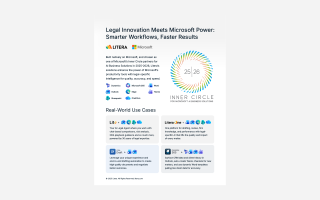How Technology Can Help You Save Time and Improve Accuracy in Scientific and Regulatory Writing
Writing about pharmaceutical and scientific research, whether for publication or for approval by the FDA, is difficult enough already: you have to communicate complex ideas in straightforward, clear, unmistakable language while persuading your readers that your findings are valid and worthy of support. Fortunately, technology is at the ready to help you produce better articles, reports, and electronic common technical documents (eCTDs) in less time than ever. Let's look at how automation, smart technology, and even new apps can help improve your writing while freeing up more of your time and energy for research.
1. Save time using automated tools.
How long does it take you to format an eCTD? How long do you spend checking your abbreviations and confirming that everything is correctly indexed in your table of contents and your list of figures? If the answer is more than a couple minutes, automated tools like our DocXtools for Life Sciences could revolutionize the way you format and finish documents. Automated tools allow you to apply pre-established content, style, and formatting guidelines to your eCTDs and other documents, producing perfectly formatted reports in seconds. These tools can also automatically create tables of contents, tables of references, abbreviation lists, appendices, cross-references, and figures and tables, saving you hours of monotonous, error-prone checking and rechecking. QC-review tools help ensure that your final documents meet your standards and that you've seen and individually addressed any deviations. You've got deadlines to meet, and you can't afford to delay your submissions. With automated tools, you can spend less time fiddling with and fixing your documents, get your products to the market faster, and have more time for your research.
2. Improve accuracy with smart technology.
In addition to saving time, today's advanced document software can improve the accuracy of your reports and eCTDs. Artificial intelligence (AI) with natural language processing allows computers to learn through experience how to decipher the meaning of text. This technology can then recognize when you use a phrase incorrectly and flag it for correction. While some fear that AI bots are going to take over scientific reporting in the popular media, you can harness the power of smart technology to produce more accurate, correct reports, and to do so quickly and easily.
3. Identify and reduce confusing jargon.
How easy are your documents to read and understand by a non-expert? When reading in a foreign language, which some would consider scientific lingo to be, readers need to understand at least 98% of words to read a text comfortably. If you're concerned about the amount of jargon in your writing, there's an app for that! Ayelet Baram-Tsabari at the Israel Institute of Technology recently created the De-jargonizer to help science writers recognize, and minimize, impenetrable jargon within their documents. Don't waste your valuable time and energy on repetitive, boring tasks that technology can handle more quickly and effectively. A variety of technological tools are available to help you make the most of your time and effort while still producing the perfect reports you need to safeguard your reputation.




